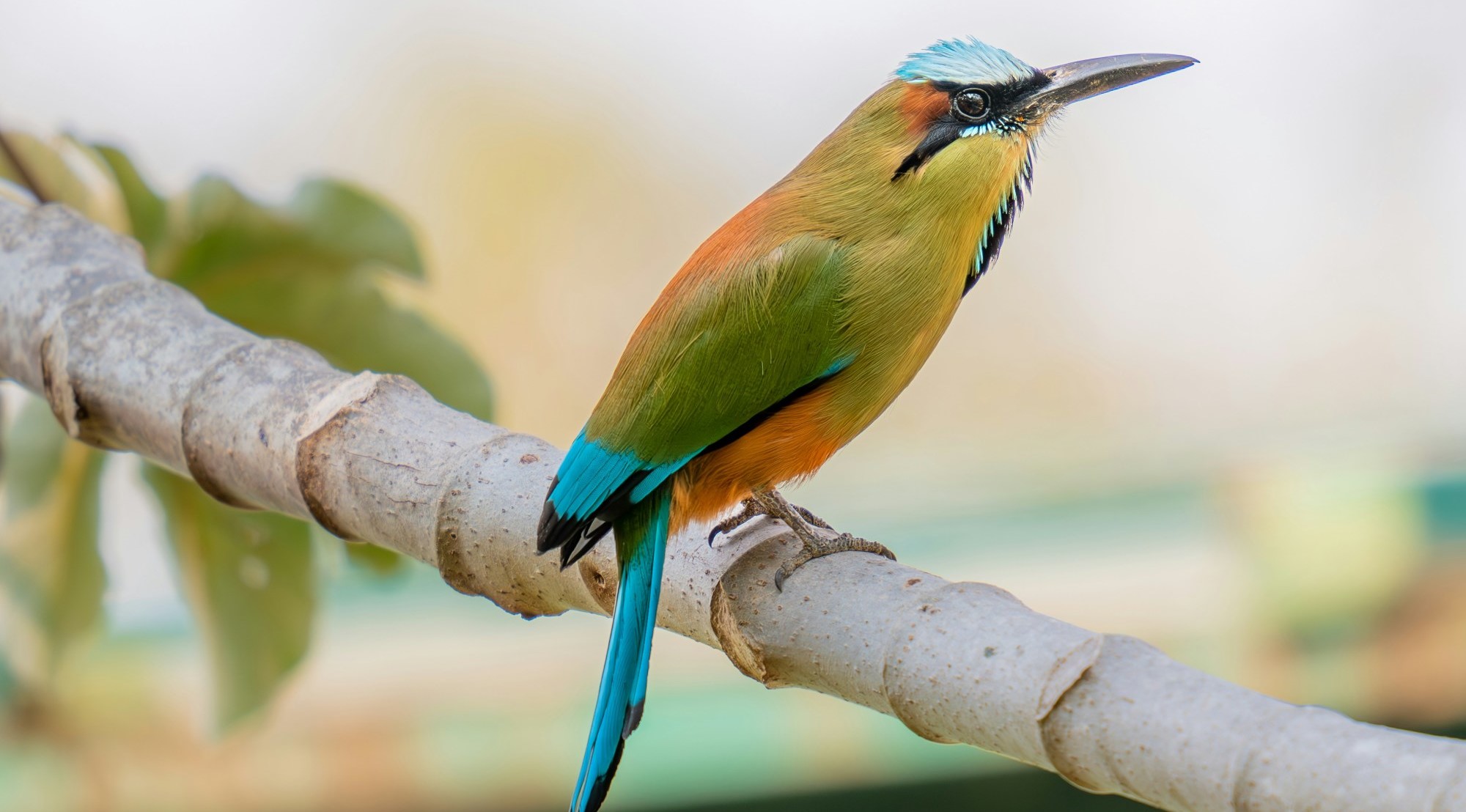
Curator’s statement
Nestled on the remote Osa Peninsula in Costa Rica, Corcovado National Park is a haven for biodiversity and adventure seekers. Often referred to as the "Amazon of Central America," this park boasts an astonishing array of wildlife, dense rainforests and pristine beaches, making it a prime destination for those seeking an unparalleled wildlife and safari experience.
The Fora Difference
Book with Marc to access exclusive perks and experiences on your trip.
Killer perks
Free upgrades, spa credits and more—we got you
Personalized recs
Customized travel planning for your style
Insider knowledge
Expert advice from people who’ve actually been there
Where to stay in Costa Rica
Unlock perks by contacting Marc to book your trip.
Things to do in Costa Rica

Unmatched biodiversity
Corcovado National Park is renowned for its incredible biodiversity. Encompassing over 164 square miles of protected land, it is home to 2.5% of the world's biodiversity, despite covering less than 0.001% of Earth's surface. The park is a living museum, showcasing a rich variety of ecosystems, including lowland rainforests, highland cloud forests, mangrove swamps and coastal marine habitats.
Visitors can expect to encounter:
Mammals: Over 140 species of mammals inhabit the park, including jaguars, pumas, ocelots, tapirs and all four species of Costa Rican monkeys: howler monkeys, spider monkeys, white-faced capuchins and the endangered squirrel monkeys.
Birds: With over 400 species, Corcovado is a birdwatcher's paradise. Highlights include the stunning scarlet macaws, harpy eagles and a variety of toucans.
Reptiles & amphibians: The park is home to numerous species of reptiles and amphibians, such as the poison dart frog, American crocodiles and the fer-de-lance snake.
Marine Life: The park's coastal areas are teeming with marine life, including dolphins, whales and sea turtles, making it an excellent spot for snorkeling and diving.
Adventure awaits
A trip to Corcovado is not just about observing wildlife; it's about immersing yourself in an adventure.
Here are some of the must-do activities:
Guided safari tours: The best way to explore Corcovado is through guided safari tours. Knowledgeable guides lead you through the park's diverse ecosystems, helping you spot elusive wildlife and explaining the intricate web of life in this lush environment. Whether you choose a day hike or an overnight camping expedition, the experience is sure to be unforgettable.
Hiking: The park offers a variety of hiking trails, ranging from easy walks to challenging treks. The Sirena Ranger Station is a popular starting point, offering access to trails that take you deep into the heart of the rainforest. As you hike, you'll cross rivers, traverse beaches and wander through dense jungle, all while keeping an eye out for the park's incredible wildlife.
Birdwatching: With its rich avian diversity, Corcovado is a birdwatcher's dream. Early morning hikes offer the best opportunities to see and hear the park's feathered inhabitants. Don’t forget your binoculars and a good bird guidebook to make the most of your birdwatching experience.
Snorkeling & diving: The park's coastal waters are part of the protected Golfo Dulce and the Isla del Caño Marine Reserve. These areas are perfect for snorkeling and diving, offering encounters with vibrant coral reefs, schools of tropical fish and larger marine animals like dolphins and whale sharks.
Sustainable tourism
Corcovado National Park emphasizes sustainable tourism to protect its fragile ecosystems. Visitors are encouraged to follow strict guidelines to minimize their impact. Hiring local guides not only enhances your experience but also supports the local economy and conservation efforts.
Practical information
Getting there: The park is accessible from the town of Puerto Jiménez, which is reachable by a short flight from San José or a scenic drive. From Puerto Jiménez, you can arrange transportation to the park entrance.
Accommodations: Options range from rustic lodges in Puerto Jiménez to camping at ranger stations within the park, to luxurious bungalows. Advance reservations are essential, especially during peak seasons.
Best time to visit: The dry season — December to April — is the best time to visit, offering more predictable weather and better trail conditions. However, the rainy season — May to November — brings lush greenery and fewer tourists.
Conclusion
Corcovado National Park is a gem for wildlife enthusiasts and adventure seekers alike. Its extraordinary biodiversity and range of activities make it a must-visit destination for anyone looking to experience the wild heart of Costa Rica. By choosing Corcovado, you're not just embarking on a safari adventure — you're supporting vital conservation efforts that preserve this unique ecosystem for generations to come.
Need to know
Nearby attractions
To make the most of your trip to the Osa Peninsula, consider visiting these nearby attractions:
Drake Bay: Located on the northern side of the Osa Peninsula, Drake Bay is a gateway to Corcovado National Park. It offers opportunities for whale watching, snorkeling at Caño Island and exploring mangroves and rivers. The bay is known for its tranquil beaches and vibrant marine life. Travel time from Puerto Jiménez to Drake Bay is approximately two hours by boat.
Caño Island Biological Reserve: Just off the coast of the Osa Peninsula, Caño Island is a premier spot for snorkeling and diving. The island's clear waters are teeming with marine life, including colorful coral reefs, dolphins and various species of fish. It's also an important archaeological site with ancient stone spheres. Travel time from Drake Bay to Caño Island is about two hours by boat.
Golfo Dulce: This large, pristine gulf is bordered by the Osa Peninsula and the mainland. Visitors can enjoy kayaking, paddleboarding and boat tours to spot dolphins, sea turtles and whale sharks. The surrounding mangroves and rainforests are home to diverse wildlife and offer excellent birdwatching opportunities. Travel time from Puerto Jiménez to the northern shore of Golfo Dulce is about one hour by car.
Puerto Jiménez: A bustling town on the eastern side of the Osa Peninsula, Puerto Jiménez serves as a hub for travelers heading to Corcovado National Park. The town offers various amenities, including restaurants, shops and accommodations. Visitors can explore nearby wildlife sanctuaries, hike to waterfalls, or take a horseback riding tour. Travel time to Corcovado National Park’s southern entrance is about two hours by car.
Piedras Blancas National Park: Located across the Golfo Dulce from the Osa Peninsula, Piedras Blancas National Park is a lesser-known gem offering pristine rainforests, waterfalls and diverse wildlife. The park is less crowded than Corcovado, providing a more tranquil experience for nature enthusiasts. Travel time from Puerto Jiménez to Piedras Blancas National Park is about two hours by car and boat.

Travel Advisor
Marc Scholnick

Get in touch with Marc
Did you like this guide? Reach out to customize and book your own experience. Or, just to chat about travel in general.
You can normally expect a response from Marc within a business day or so. You’ll also be subscribed to our travel newsletter (you can unsubscribe at any time).
This guide is part of our ongoing series on travel to Costa Rica. Looking for more travel inspiration? Check out Ian White's guide, Spring Break in Santa Teresa, Costa Rica.